- Administrator
- Albums and Singles
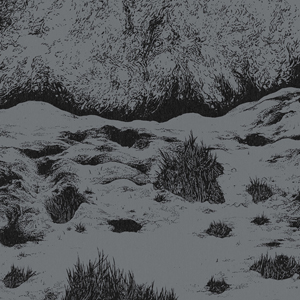 Two different artists who both work within the realms of psychedelic tinged minimalism share this split single that in a genre sense are very different from one another, but thematically and conceptually make an excellent pairing and compliment each other quite well.
Two different artists who both work within the realms of psychedelic tinged minimalism share this split single that in a genre sense are very different from one another, but thematically and conceptually make an excellent pairing and compliment each other quite well.
John Kolodij's High Aura'd supplies "Remain in Light," and while any specific references to the Talking Heads slipped right past me, the conceptual flow of the song matches the title well.Initially a wall of shifting rain like noises, it slowly enters the sunlight with a melodic tone to it, offset by a bit of looping, textural like static.However, extended sun exposure can damage, and as the piece wears on it concludes in a noisy, swirling vortex of what sounds like guitar noise and destruction.
On the flip side, Blood Bright Star, a relatively new solo project by Reuben Sawyer, goes right into a more straight forward krautrock sound.Heavy, tremolo laden guitar echoes and slithers about while propelled by a rock solid motorik rhythm on "Golden Blood, Part II."Even with these pieces put together, the result has a sort of blues swagger that gives it a unique edge and sound.
Both halves of this single clearly work in the realms of minimalism, but taking notably different approaches.Kolodij’s contribution does this via instrumentation, doing significant work with a sparse collection of tools, while Sawyer uses it as a compositional framework, building upon the signifiers of blues and rock to create a repetitive, but constantly evolving song.
Read More
- Administrator
- Albums and Singles
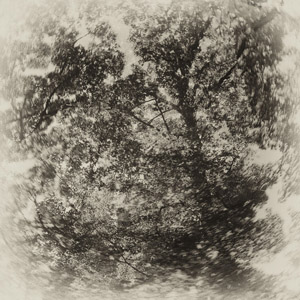 A Zelienople side project featuring Matt Christensen and Mike Weis, the latter also of Kwaidan, and Scott Tuma recorded the material that comprises this album originally for a CD-R in 2006 and have been rather quiet since. Reissued with a wider scope and presentation, the seven untitled pieces that make up this album are in league with their other projects, yet have a hazy, singular edge all their own.
A Zelienople side project featuring Matt Christensen and Mike Weis, the latter also of Kwaidan, and Scott Tuma recorded the material that comprises this album originally for a CD-R in 2006 and have been rather quiet since. Reissued with a wider scope and presentation, the seven untitled pieces that make up this album are in league with their other projects, yet have a hazy, singular edge all their own.
Awash in reverb, much of the instrumentation used on this LP is somewhat indistinct, aside from the focus many songs have on acoustic guitar that gives a certain folk feel to the music.The second song, for example, puts the focus on the instrument, casting the guitar notes amidst a sea of reverb and open, glorious space, occasionally drifting into a western-esque twang and sometimes meeting up with almost sounds like a sitar as a very different counterpoint.
The third piece continues the theme but reconstructs it into the most diverse, powerful song on the album.Dropping the overt guitar, the droning electronics and synth-like moments of what preceded it become the focus, and with the addition of infrequent, but prominent percussion, it takes on an intense, cinematic quality that builds and builds into its harsher, dissonant conclusion.
The beginning of the second side of the LP retreats from this grandiose conclusion, slowly spreading out as sparse and fragmented, with clinking noises and what sounds like a bass guitar leading off.While stripped back to the barest essentials, everything is obscured in an intentional, opium smoke haze of sound and mood.The sixth untitled piece goes even further back, leaving just the most basic of acoustic guitars and a bleak, dark bed of muddy ambience.
The second side is closed with another climactic piece, this time what sounds like strings (synthetic or natural) resonating in a cavernous expanse, with blurping synths popping up here and there as a more forceful outburst.Vocals are present, but buried and effected to lack any clear lyrical meaning.It is complex, but has a distant, organic feel, and the entire song seems to slowly drift apart as it concludes, like oil diffusing in an oceanic expanse.
Like its sepia tinged abstract cover art, this record from Good Stuff House is shrouded in a hazy, mysterious fog.Distant and obtuse, but with a warm, inviting nature, it is an enigma that begs to be solved, but is not the most simple thing to understand.
samples:
 
Read More
- Administrator
- Albums and Singles
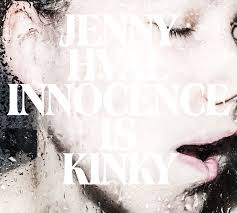 Jenny Hval takes a morbid pleasure in using her voice to provoke discomfort on her second full-length release. From the opening lyrics of the title track to the arcing croon of "The Seer," Innocence Is Kinky lives its title through a bravery bordering on refuge in audacity. It seems to be a defense based in false naïveté, where Hval's surrealistic persona adds a unique flourish to a collection of unabashedly smart and well constructed songs on gender and sexuality. As the record unfolds, this keen irreverence pays off. Innocence Is Kinky reveals itself as one of the better singer/songwriter albums of 2013, hiding a deeply powerful message under the false guise of shock.
Jenny Hval takes a morbid pleasure in using her voice to provoke discomfort on her second full-length release. From the opening lyrics of the title track to the arcing croon of "The Seer," Innocence Is Kinky lives its title through a bravery bordering on refuge in audacity. It seems to be a defense based in false naïveté, where Hval's surrealistic persona adds a unique flourish to a collection of unabashedly smart and well constructed songs on gender and sexuality. As the record unfolds, this keen irreverence pays off. Innocence Is Kinky reveals itself as one of the better singer/songwriter albums of 2013, hiding a deeply powerful message under the false guise of shock.
Jenny's voice throughout Innocence Is Kinky is mixed high, tactile and wet and percussive. I prefer it as such, because the balance of the album lies in its uncanny subversion of what might be expected for a female-driven vocal pop album. Hval excels in a brand of flippant, mellifluous, blink-and-you-miss-it vocal arcs and tweaks, exploring each crevice in the spaces she creates. It reminds me initially of traditional folk music, but there is also a jazzy complexity at work, a melodic savvy and faith in her instrument that excuses the occasional over-indulgences. Her lyrics are bluntly profane, a system of orifices and gasping non-metaphors; not just "having sex" but "fucking."
I find that the most glaring examples of Jenny's over-exuberance also make for the strongest songs. The title track opens the record with a disarming declaration of love for internet porn, but soon transforms into a surreal and powerful expression of sexual independence. "Mephisto In The Water" finds her protracting the song's bridge and repeating its last few words, tensely ascending in pitch until she goes flat, clamoring against her vocal nuances in a strenuous show of loss or need or something stranger. "Death Of The Author" drops off halfway into a clattering chorus of fuzz and percussion, Hval crying out an existential mantra: "Me by your eye/me by your hand/me by your mirror." "The Seer" closes out the record as a keenly transformative manifesto, a spiritual awakening of vowels and endlessly reverberating tonal quirks, layered over a dense religious drone.
On its own, the material backing Jenny Hval's singing is nothing remarkable, and pretty disconnected. It is a typical grab-bag of drone-influenced pop, with occasional rock passages and some experimentation with noise and feedback. On her sheer strength alone she elevates the quality of the album to something transfigured and new, though. Commanding unfettered confidence she sings on gender, sex, repression, Oedipal complexes, femininity and a loss of identity so viscerally so that the songs are not distinguished by their accompaniments but the topics and her unmatched ferocity in approaching them. I will return to it often, if only to glimpse a little gracious bit more of its depths.
Samples:
Read More
- Administrator
- Albums and Singles
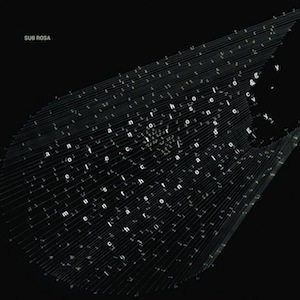 For its seventh and final volume, Sub Rosa’s mighty experimental music compilation has been expanded to a triple CD. At this point, I would have thought that all the good stuff would have been covered but label boss and Anthology curator Guy Marc Hinant has managed to uncover more startling curiosities from the last 150 years to make this series go out with a bang (and a drone and a blast of white hot feedback).
For its seventh and final volume, Sub Rosa’s mighty experimental music compilation has been expanded to a triple CD. At this point, I would have thought that all the good stuff would have been covered but label boss and Anthology curator Guy Marc Hinant has managed to uncover more startling curiosities from the last 150 years to make this series go out with a bang (and a drone and a blast of white hot feedback).
When the first volume of An Anthology of Noise & Electronic Music came out, I was just starting university and finding my way from mainstream metal and electronic music into the wilder world of music through groups like Einstürzende Neubauten and Throbbing Gristle. I noticed this compilation in Dublin's Road Records (unfortunately a thing of the past) and saw Neubauten was on the tracklist so I took a punt on it. It blew my mind and most of the material took me years to come around to. Fast forward to 2013 and I am still finding An Anthology of Noise & Electronic Music to be a challenge, even a slog at times. This has been the series’ strength in actually presenting music that represents a true avant garde sensibility (even if the avant garde it is documenting is largely six feet under at this point in time).
Like previous volumes, this seventh volume hopscotches around time and theme to create a baffling tapestry of recorded sound. Pieces from the 1950s like Henry Jacobs' "Sonata for Loudspeakers" and Bebe and Louis Barron’s "Bells of Atlantis" (which is stupendously good) represent the work of very enthusiastic amateurs (indeed the Barrons would go on to score the soundtrack for Forbidden Planet a few years later) whose pieces sit comfortably alongside "serious" academic works like Luciano Berio’s "Thema (Omaggio a Joyce)." Suddenly, we are dropped from this quaint world of tape experimentation into the future worlds of modern electronic music. Works by Benjamin Thigpen and Helmut Schäfer demonstrating how experimental music is continuing to develop, even if it lacks the same "shock of the new" as in former times.
Included as a footnote at the end of the first disc is the now legendary phonautograph recording by Édouard-Leon Scott de Martinville of a human voice singing "Au Claire de la Lune." Its place on this collection is at first strange, this is neither a piece of electronic music and Scott de Martinville was obviously trying to capture sound as oppose to corrupt it. Yet it is only through techniques developed through the exploration of electronics in relation to sound that is possible to hear this piece of history (it’s also not the most melodious things I have ever heard).
A sizeable portion of the compilation is given over to the electric guitar, the scourge of parents’ hearing the world over for decades. Alan Courtis and Justin Broadrick both demonstrate how the electric guitar is a perfect instrument for fooling around with in terms of bedroom setups and signal processing. Fausto Romitelli’s "Trash TV Trance," performed by Tom Pauwels, takes a different take on noisy guitar with its complex, frenetic playing simultaneously virtuoso and overwhelming. The cream of late '80s, early '90s indie guitar worship (namely Spacemen 3 and My Bloody Valentine) are also present in the form of E.A.R. whose line up for this recording is a dream team of Peter Kember, Kevin Shields, Kevin Martin, and Eddie Prévost. The guitars are not the focus here but are certainly integral to the piece as it unfolds slowly and beautifully through various psychedelic tones.
The pure noise end of the spectrum is also well catered for with a euphoric early piece by The New Blockaders; "Blockade is Resistance" purges the air like a holy fire and is confrontational even by today’s standards. More disturbing is Warong Rachapreecha’s "Shambles," which is just under a minute of a pig being slaughtered. Less distressing is "Skate" by The Rita where Sam McKinlay manages to combine the hypnotic sound of skateboarding with harsh noise. Taken together with similar works smattered throughout the series, any notion of noise being a homogenous wall of feedback is strongly contested. Even as someone who has spent a lot of time listening to this sort of music, the Anthology of Noise & Electronic Music has served to reignite my interests and reboot my auditory cortex.
What is surprising at the end of the series is not that Hinant has managed to miss out on seminal artists like Throbbing Gristle, Whitehouse, Keiji Haino, David Tudor, Coil, Nurse With Wound, Kraftwerk, Pierre Henry, Kurt Schwitters, Marcel Duchamp, Delia Derbyshire, etc. etc. but that their absence is only noticeable when you are writing a review for an online music magazine. While I am dismayed that there will be no future instalments in the series, I am still working my way through all the previous volumes to revisit and re-examine the artists included. This last volume contains as much, if not more, unfamiliar works as it does familiar which I imagine will mean an expensive few years of tracking more material down.
samples:
- Luciano Berio - Thema (Omaggio a Joyce)
- E.A.R. - Beyond the Pale
- GX Jupitter-Larsen/The Haters - Fuechen
 
Read More
- Administrator
- Albums and Singles
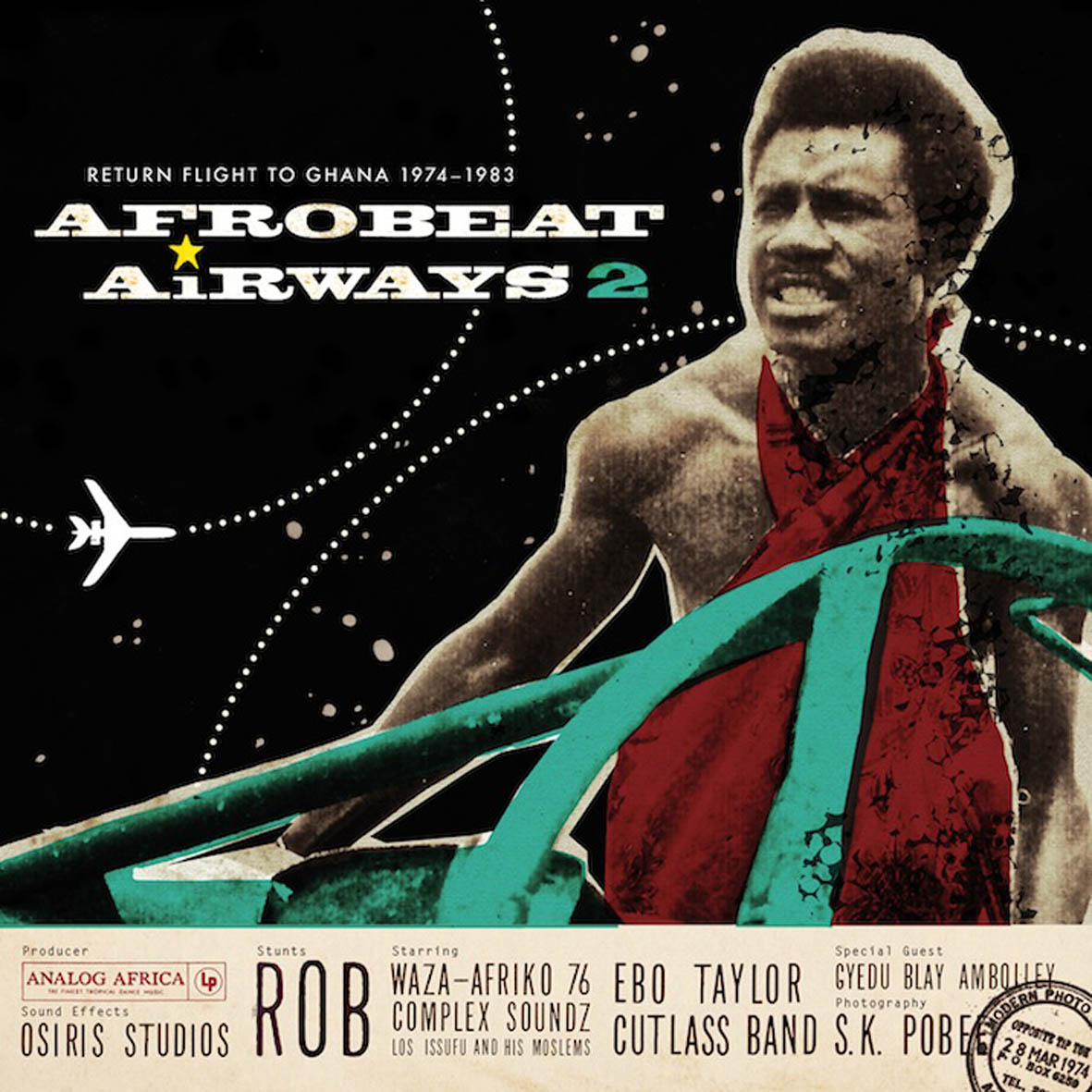
This sequel to 2010's fine Afro-Beat Airways delivers still more Fela-free gems from Ghana's golden age, which is (of course) is exactly what I wanted and expected.  While many of the featured artists (Vis-A-Vis, K. Frimpong, etc.) will already be quite familiar to anyone with even a casual interest in African music reissues, the material is uniformly solid and offers enough obscurities to keep things interesting.  Even the most jaded aficionados will enjoy Samy Redjeb's characteristically colorful and exhaustive liner notes though, as he has unearthed a slew of rare photos and tracked down some interesting interviews with a lot of people who probably never expected to be interviewed by an excited German in 2013.
By now, the "Analog Africa compilation" aesthetic is a very well-established formula, and Redjeb wisely does not mess with it for Afrobeat Airways 2.  Occasionally, Samy will surprise me with something completely amazing like last year's Diablos Del Ritmo, but most releases just offer up a generally likable batch of songs rescued from obscurity mingled with a handful of legitimately great ones that I wind up listening to in fairly heavy rotation for months (or years) afterward.  Nearly all of those gems this time around predictably come from the usual suspects, like Uppers International's stuttering, darkly funky "Aja Wondo" and K. Frimpong's lurching, understated "Abrabo" (a piece sans his Cubanos Fiestas that I have not heard anywhere else).  And, of course, the ever-reliable Rob delivers yet another predictably lascivious delight ("Loosen Up Yourself").  Also, while I was previously unfamiliar with Pierre Antoine (whose "Say Min Sy Soh" is probably the album's highlight), he is backed by the awesome Vis-A-Vis, which explains everything.  Actually, Vis-A-Vis are also the uncredited backing band for the K. Frimpong song, so they more or less steal the show on this compilation.
Music aside, what makes Analog Africa compilations so unique and special is their lavish and exhaustive liner notes and Afrobeat Airways 2 boasts some of Redjeb's best work, as Samy seems to have been in an uncharacteristically poetic and reflective mood.  For example, he summarizes the abandonment of horn sections for synthesizers, drum machines, MIDI, and computers thusly: "The harvest of this dispassion is three decades of sonic mediocrity."  He also tours the former site of one of the scene's hottest clubs (since converted to a church) and notes "I was shown around by a kind gentlemen who was trying to convince me that there were an infinite number of paths to accept Jesus as my personal savior. Little did he know that my 'saviors' had left the stage many years ago."  On a related note, it was morbidly fascinating to learn that the entire scene was essentially killed by a government-instituted curfew, a decision that more or less forced every relevant musician in Ghana to pack their bags and head elsewhere.
The real coup for this compilation, however, is that Redjeb was able to get access to the archives of Modern Photo, whose somewhat disinterested proprietor let him sort through boxes and boxes of forgotten negatives that had narrowly survived a flood.  Many of those photos are included in the booklet and some of them quite wonderful, particularly one of Fela Kuti exiting a plane with his entire female entourage, though I also enjoyed all of the Boogaloo competition shots.  Even the less spectacular aspects of the liner notes are endearing though–even though guitarist Sammy Cropper's interview yielded the usual litany of names, dates, and places, it was life-affirming that Redjeb went through the trouble to track down an aging school security guard to tell him that he is regarded as a guitar god and that people are excitedly trying to track down forgotten recordings that he made four decades ago (I am perhaps getting a bit sentimental in my old age).
Overall, this is a much better than average Analog Africa collection: it is not quite essential, but it should disappoint absolutely no one.  Aside from the songs mentioned above, there are quite a few other strong moments, particularly Waza-Afriko 76's "Gbei Kpaka Hife Sika."  Such a high success rate is surprising for an Afrobeat compilation, as the genre has historically been plagued by wild excess and indulgence–to Redjeb's credit, very little of that surfaces here, as most songs are under five minutes and few are even under three(!).  Even the few songs that I do not particularly like (Tony Sarfo's American funk pastiche and De Frank's repetitive, sing-songy "Waiting For My Baby") are appealing enough to avoid being dismissed as mere filler.  Of course, the music is only part of the picture in this case, which is why Analog Africa compilations are so great: Afrobeat Airways 2 is basically yet another important chapter in a lovingly assembled crash course in African culture and history taught by one singularly enthusiastic crate-digger.
 
 
Read More
- Administrator
- Albums and Singles
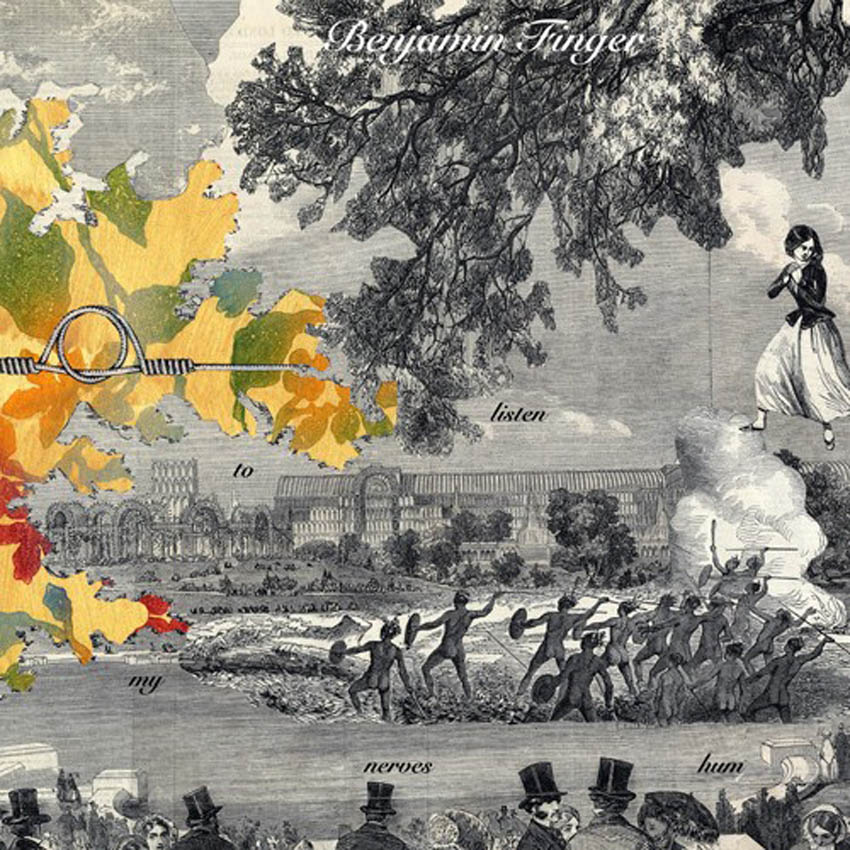 I have been casually following Benjamin Finger's career ever since being completely blindsided by his hallucinatory 2009 masterpiece Woods of Broccoli and I have found it quite perplexing to observe: Broccoli never got even a fraction of the acclaim it deserved and its beat-driven 2011 follow-up (For You, Sleepsleeper) seems to have completely disappeared without a trace.  In a perfect world, this latest effort would redress that inequity (Nerves is Finger's first release on a US label), but Benjamin's current aesthetic has taken quite a curious and challenging turn.
I have been casually following Benjamin Finger's career ever since being completely blindsided by his hallucinatory 2009 masterpiece Woods of Broccoli and I have found it quite perplexing to observe: Broccoli never got even a fraction of the acclaim it deserved and its beat-driven 2011 follow-up (For You, Sleepsleeper) seems to have completely disappeared without a trace.  In a perfect world, this latest effort would redress that inequity (Nerves is Finger's first release on a US label), but Benjamin's current aesthetic has taken quite a curious and challenging turn.
The most succinct and glib way to describe this album is this: Benjamin Finger just bought a piano and seems to be very excited about it.  However, the truth is a lot more complicated and puzzling than that, as Finger has always had a piano and he has employed it quite beautifully in the past as just one small part of his complex, multilayered arsenal.  With Listen To My Nerves Hum though, Benjamin has essentially jettisoned everything else from his palette except for some muted field recordings.  Also, on a deeper level, he seems to have additionally abandoned almost everything he knows about music: on Beneva vs Clark Nova's Sombunall, he showed he could craft great electronic pop songs, then on Woods of Broccoli, he demonstrated that he was even more adept at fragile, sublimely beautiful psychedelia.  With Nerves, he often sounds like an outsider artist trying to channel Erik Satie though real-time improvisations.
While that admittedly seems like a very self-defeating move, it is also a very daring and noble one: all artifice and processing has been stripped away to leave only music at its most naked and organic.  I doubt I ever would have given Nerves a second listen if I had not already been confident that Finger knew what he was doing, but there is definitely something here–it just takes some significant attention to appreciate it, as the album's quiet, unique beauty gradually revealed itself to me more and more with repeat listens.
Most of the best parts occur when well-chosen field recordings unexpectedly make their way into the foreground, like they do in album highlight "Ãno Nuevo Acid Crackers," where the melancholy plinking piano motif is gradually forced to share the stage with the celebratory sounds of a fireworks display.  Most of the time, however, the field recordings are used in much more subtle fashion, lending just a hint of cinematic otherness to Finger's playing (like the footsteps, echoing voices, and crackling French radio broadcast beneath "Das Paris Des Second Empire Benjamin").  Also, the sound of Benjamin's piano is in itself somewhat mesmerizing, as it seems close mic'd in a way that renders every little oscillation and nuance of decay audible.
All of that makes Listen To My Nerves Hum an extremely difficult album to formulate a clear opinion on.  As a listener, I found the album to be a bit exasperatingly one-dimensional and simplistic, as it feels like a series of sketch-like, lo-fi improvisations.  My frustration was amplified by the fact that several individual pieces were quite good and would have been much more striking and emotionally resonant if they had been transitioned to in a more effective and dynamically/texturally varied way–an entire album of monochromatic, minimalist piano tinkling invariably makes my ears very sleepy.  However, as a Benjamin Finger fan, this album is kind of exciting: it is ambitiously uncharacteristic and unexpected, deliciously cryptic, and leaves me with absolutely no idea where he might go next.  Also, the music itself is just one facet of the release-if I had been one of the 70 people to get the limited edition CD version, I would probably be hailing Nerves as an unqualified masterpiece, as it might possibly have the coolest packaging that I have ever seen (it folds out into a strange extinct bird mobile made from antique piano innards).  Which, I suppose, ultimately makes Listen To My Nerves Hum a great installation rather than just a likable, but flawed, album.
(Note: This is a review of the marginally less cool-looking vinyl version, as the hopelessly sold-out "bird mobile" version includes five additional songs)
 
Read More
- Administrator
- Albums and Singles
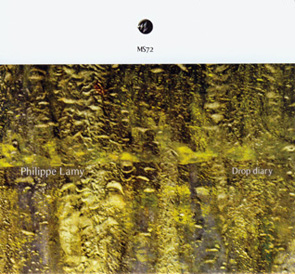 Daniel Crokaert’s Mystery Sea label challenges artists to produce music inspired by and infused with the mystique of "liquid states," whether that means using the sound of amplified water or catching the unpredictable flow of human perception on disc. French musician and painter Philippe Lamy comes at that challenge from both directions on Drop Diary, using the sound of water to focus on the way various environmental and synthetic sounds interconnect. Each piece is stacked with tiny sounds, but the way he weaves them all together gives the album a beautiful, supernatural quality, as open and as alive as the environments used to make it.
Daniel Crokaert’s Mystery Sea label challenges artists to produce music inspired by and infused with the mystique of "liquid states," whether that means using the sound of amplified water or catching the unpredictable flow of human perception on disc. French musician and painter Philippe Lamy comes at that challenge from both directions on Drop Diary, using the sound of water to focus on the way various environmental and synthetic sounds interconnect. Each piece is stacked with tiny sounds, but the way he weaves them all together gives the album a beautiful, supernatural quality, as open and as alive as the environments used to make it.
Lamy treats the sound of water like a constant in his otherwise stream-of- consciousness productions. In some instances it echoes nakedly, in others it drones on almost inaudibly, masked by waves of digital refuse and processed noise. But it’s always there. Philippe pours it into metal pans and glass cups. He captures its fall from branches and awnings during and after a storm, and he records its sibilant singing as it splashes and cuts down streams and over surfaces.
He combines these noises with other environmental and synthetic sounds, forcing his listeners to imagine each element as part of a larger web of events and motions. Those motions propel his music forward and reshape the rigid digital sounds into a less definite, more accommodating state. The crunch of broken glass mingles with a horse trotting down a brick road, which then rubs elbows with the sound of water trickling through pipes, which tumbles into a burst of digital noise before coming to rest in a still room, with a light storm passing by outside.
Lamy presumably took these sounds from places he knows well, and he uses the proximity of those places to arrange the music. He connects horse hooves to lawnmowers to throbbing, Badalamenti-esque synthesizers in a kind of four dimensional sound photo; not because there's a secret narrative running between them, but because these things exist side by side somewhere in France, where the album was recorded. That continuity calls into question whether the spaces Lamy recorded are distinct and individual locations at all, and not artificially determined segments of one uninterrupted space. Is it the sound that flows or does the flowing come from the consciousness that connects all the dots?
As the album progresses Philippe removes many of his sound sources. Instead of tumbling over one another, events start to come one and two at a time. Birds sing in the far distance, insects chirp and buzz with them, the sound of water echoes ever clearer. By the time it’s over, Lamy has slowed time down and reduced the music to an almost meditative hum. As the field recordings intermingle, an exciting sense of scope materializes; a feeling that the very smallest things in the world are all connected, and that something much bigger is waiting just over the horizon.
samples:
 
Read More
- Administrator
- Albums and Singles
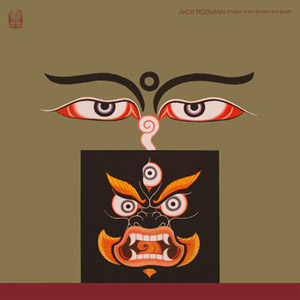 The word "epic" has lost all meaning due to overuse and misapplication in popular culture. Thus when something fits the true definition of that word, such as Images of the Dream and Death, it almost seems pointless to use that as a descriptor. However, spread across three LPs and attempting to capture the never-ending struggle between the two opposing forces of good and evil, with often terrifying results, there is not a more apt term.
The word "epic" has lost all meaning due to overuse and misapplication in popular culture. Thus when something fits the true definition of that word, such as Images of the Dream and Death, it almost seems pointless to use that as a descriptor. However, spread across three LPs and attempting to capture the never-ending struggle between the two opposing forces of good and evil, with often terrifying results, there is not a more apt term.
This version is actually the fourth by Rózmann, with previous ones accomplished with only a Buchla synthesizer or a traditional church organ.While the full instrumentation on this edition is not necessarily clear, there is a definite, and unique use of analog synthesis that can be heard throughout but the sound is far fuller than that.
Split into three thematically linked parts, the A side of the first LP captures Part I and the first half of Part II.The first part is intended to present the types of good and evil in an introduction of sorts, and by Rózmann's own admission, good is presented less than idealistically.Alternating between guttural, monstrous growls and timid, whimpering electronics, the evil archetype is by far the more forceful and commanding beast.
The second part, conceptually presenting various forms and matter, is much more restrained and atmospheric.Quick squeaks and blips of synth are paired with low register groans creaks.It is far more ambient and environmental in comparison to what preceded it, with sustained passages of sound setting more of a mood than the jerky, erratic snarls and whines from the previous segment.
Part III encompasses three and a half sides of vinyl and begins with what sounds like a tolling bell and far off, almost wolf like cries.While it not is intentionally presented as such, this third part works like a final battle between good and evil due to its extreme aggression and jarring sonic turns.Sputtering, almost percussive noises pummel and then retreat, leaving openness that is soon upset by metallic banging and violent banging.
At times the dissonant outbursts are reminiscent of Autechre's most abstract moments, but rather than becoming sustained, it just as quickly falls away to silence, or is upset by terrifying animalistic growls.Even more disturbing, these bestial noises sometimes are muted into an almost heavy breathing like sense of menace.Demonic shrieks and reverberating scrapes alternate with bleak, muted choir like moments, creating a sense of battle that ends, but intentionally does not come to a conclusion.
Trying to put this record into words is a difficult proposition.The concept of using generated, synthetic approximations of "evil" sounds almost cartoonish (ironically enough Rózmann has done sound effect work for animation), but it never comes off that way.In truth, it sounds truly terrifying and unsettling, and its intentionally loose and erratic composition style just exacerbates this even more and makes for one of the darkest, most frightening sounding releases in recent memory.
samples:
 
Read More
- Administrator
- Albums and Singles
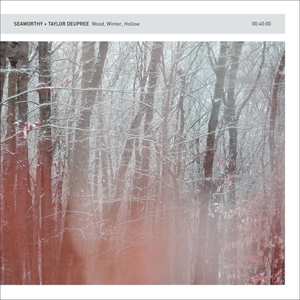 Even though 12k head Taylor Deupree has made it a point in recent years to focus on face-to-face collaborations (as opposed to file swapping), the two most recent products of this have their own distinct sense of isolation and loneliness to them. With Cameron Webb's Seaworthy, it is literal: the record perfectly captures the feeling of being alone in the woods with only an acoustic guitar present. With legendary artist Ryuichi Sakamoto, it is more of an implied, intimate and hushed loneliness via muted tones and extended ambience.
Even though 12k head Taylor Deupree has made it a point in recent years to focus on face-to-face collaborations (as opposed to file swapping), the two most recent products of this have their own distinct sense of isolation and loneliness to them. With Cameron Webb's Seaworthy, it is literal: the record perfectly captures the feeling of being alone in the woods with only an acoustic guitar present. With legendary artist Ryuichi Sakamoto, it is more of an implied, intimate and hushed loneliness via muted tones and extended ambience.
Wood, Winter, Hollow is the most organic and stripped down of these two projects, with untreated field recordings interspersed between the three long pieces.Recorded during the winter in a New York nature reserve after Hurricane Sandy, the constant sound of snapping branches conjures the disarray of the area perfectly.With the absence of animal life due to the season, there is a cold isolation prominent throughout.
These recordings make their way into the three compositions reflected in the title."Wood" sounds like riverside recordings, with heavy emphasis on acoustic guitar that may have only the slightest of processing and treatment to them.The electronic influence is a little more prevalent on "Winter", with some ever so slight pitch bending and intentional digital clipping to offset the guitar.What might be a soft passage of electronics (or electronically treated organic instrumentation) cautiously underscores everything, even when it ends in an uncharacteristically lo-fi collapse.
"Hollow" turns up some bells to be paired alongside the guitar, with what may be actual analog synths making themselves known, even with the more aggressive field recordings.The latter moments become surprisingly raw and chaotic, given the otherwise restrained nature of the album, but then end in a quiet, tranquil moment.
samples:

Disappearance, Deupree’s collaboration with Sakamoto, is more of a studio product, and unsurprisingly has some obvious, untreated piano playing.However, at times the notes are just as important as the sounds surrounding them, such as the varying registered tones of "Jyaku," which are interspersed with what sounds like in-studio found sounds and organic movements.
The sparseness is upset by bits of digital interference and more monolithic, expansive tones on "Frozen Fountain," which manages to be simultaneously rich, yet sparse in its overall composition.Buzzing strings and a delicate, churning textural foundation on "Ghost Road" are a perfect fit for the title, conjuring a sense of passing spirits in the distance.
"This Window" in some ways feels like a subtle reference to the Wood, Winter, Hollow with its sounds feeling like an isolated, chilly forest, albeit underscored by a piano flourish.Slowly, but steadily, it transitions from frigid, gale winds into a rich passage of tone and an inviting warmth.
Ichiko Aoba makes an appearance on the long closer "Curl to Me," with her heartbeat becoming the rhythmic foundation.Filtered rising and falling tones and elongated, stretched out tones make for a beautiful, yet isolated experience, with the heartbeat feeling like the only organic elements to be had.Aoba's vocals appear too, and they are so slow and faint they are almost imperceptible, but work perfectly given the intimacy of the song.
I was impressed with the moments on Wood, Winter, Hollow in which things took on more clearly dissonant, low fidelity turns, but as a whole Disappearance is the richer experience for me.The guitar and field recordings on the former is a bit too rooted in Deupree's comfort zone, so I was pleased to hear his distinct, light touch given to an album that sounded a lot different than his recent works, which is the case with Disappearance.Both, however, are exemplary, yet significantly different albums of minimalist brilliance.
samples:
 
Read More
- Administrator
- Albums and Singles
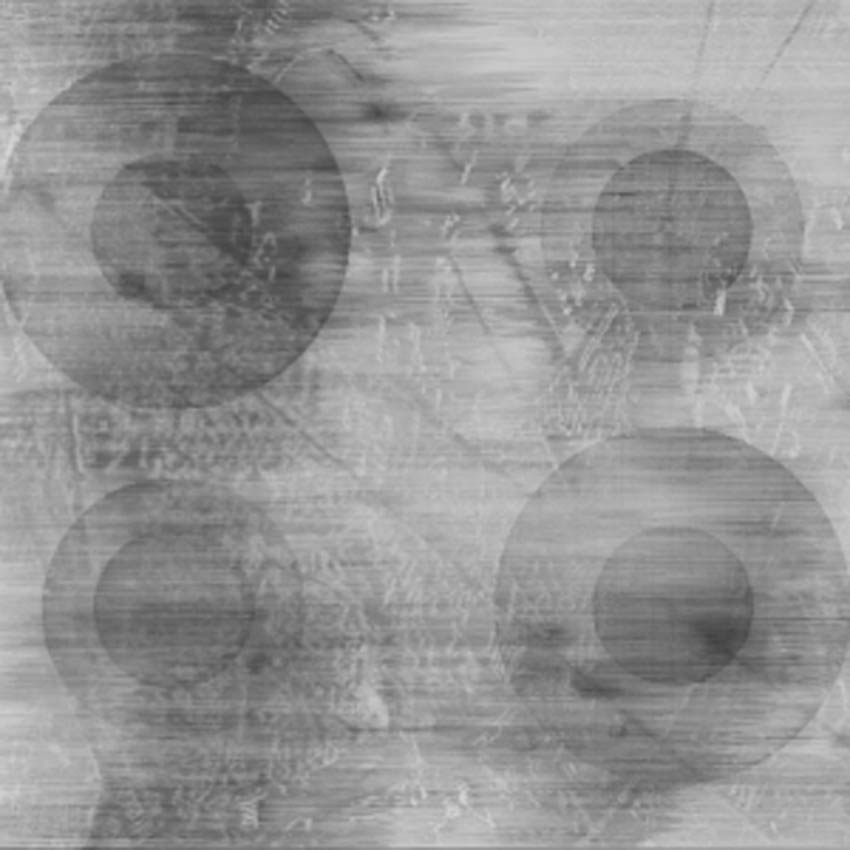
Catherine Christer Hennix has certainly had a very curious career, to say the least: she worked at MIT's Artificial Intelligence lab in the '70s, was a research professor in mathematics at SUNY New Paltz, studied with Pandit Pran Nath and LaMonte Young, collaborated with Henry Flynt, and made some singularly challenging and adventurous music that somehow never got formally released until her 1976 performance of The Electric Harpsichord was finally issued by Die Schachtel in 2010.  Now in her mid-60s, Hennix has beautifully capitalized on the belated interest in her music to become the reigning queen of deep, Eastern-influenced drone.  This latest release is not a far cry from last year's fine Chor(s)san Time-Court Mirage album, but it is every bit as good (if not better).
I must admit that I was pleasantly wrong-footed by Hennix's current direction after being initially exposed to her through the somewhat maniacal and sinister-sounding The Electric Harpsichord, as she now sounds like a completely different artist.  Of course, that makes perfect sense, given that over 30 years separate the recordings and that none of the evolution that occurred between them was ever formally documented or released.  Also, neither this nor the Chor(s)san album are solo endeavors: for Svapiti, Hennix is rejoined by Chor(s)san vocalist Amelia Cuni, as well as new collaborator Werner Durand (credited with "invented wind instruments" and "drones").
Given that Svapiti is about as "drone" as music can get, it might seem like Durand played a very dominant role in the album, but the trio's contributions are so blurred together that it is often impossible  to tell who is doing what.  In any case, the crux of the composition seems to be a gently quavering, hazy, and layered bed of Hennix's vocals accompanied by a steadily buzzing sitar or tambura drone.  In fact, for long stretches, that is all there is (the piece clocks in at nearly an hour).  The beauty lies in the details and the transitions, as the trio gradually embellish their hypnotic thrum with Durand's viscerally breath-like and stuttering wind instruments, as well as Cuni's increasingly prominent and ritualistic-sounding chants (which take their inspiration from Indian classical singing).
Svapiti also steadily grows in density and power as it progresses, but does so in an impressively organic and slow-burning manner.  The most prominent change is the introduction of some deeper wind instruments, which unpredictably blurt and throb rather than languorously drone.  Also, some of the higher-pitched wind instruments begin to swirl together to create a roiling, dissonant miasma that dissipates almost as quickly and unexpectedly as it came together.  That is ultimately the piece's harshest moment, but a few other surprises gradually emerge from Svapiti's ebb and flow as well, the most memorable of which is a juddering, burbling interlude of Cuni's heavily processed vocals.
While Born of Six definitely take quite a bit of their direction, as well as their name*, from Indian classical music, there is actually a bridge that links Svapiti to The Electric Harpsichord—the use of Just Intonation.  I imagine that there are also quite a lot of deeper philosophical and/or behind-the-scenes structural concepts linking them as well (Hennix is big on that sort of thing), but the two albums are as different as night and day from a listening perspective.  Consequently, it is very hard to contextualize Svapiti within Catherine's (very limited) discography.  It is also a bit reductive to even classify this album as "drone," as it is prone to some rather jarring, strangled, and somewhat abrasive passages that occasionally push the piece into somewhat challenging and nerve-jangling territory (a trait shared by labelmate Pauline Oliveros' recent work as well).  The important thing, however, is that it is all very good (which it is).  The Electric Harpsichord probably remains the most bracingly original and essential release in Hennix's oeuvre, but Svapiti deserves a place of honor for presenting her distinctive vision in a much more listenable way.
(*"Born of Six" refers to the Vedic sage Narada's assertion that the tonic note originates from a combination of nose, throat, chest, palate, teeth, and tongue.)
 
Read More
- Administrator
- Albums and Singles

Interbellum "This was an important place in their lives"
FSS 022 CD / Digital Album
Release Date: Oct. 14, 2013
Brendan Burke details the inspiration for the new Interbellum album thusly:
I moved into a new apartment in the same building. A family with two small children had been living here for several years previously. The textured wallpaper in the bedrooms has all these "sun shadows", where art and pictures had previously hung. These spots are much darker than the other spots on the wall, and so they form rectangular areas that are easily discernable and where other people's memories and things used to be. To me, that's sort of an interesting thing.
From the initial bass dredging on “Some Rather Poor Advice,” it is evident that layers of static and disruption have been woven into Burke’s plangent melodies. A palpable sense of absence, loss and contradictory discovery are expressed across This was an important place in their lives.
This Was an Important Place In Their Lives is the second Interbellum album and the first completely realized by Burke alone. It is being released in a limited edition of 200 CDs packaged in Cortland linen weave photo folders with a photographic print and as a download.
These compositions subtly weave thorny electronic treatments into a slow-burning exchange of melody between the two performers, ensuring that the lyrical, thoughtful instrumentation never spills out into cumbersome sentimentality. Excellent, and highly recommended. Boomkat
Music to play on end on a long winter day. Vital Weekly
…the overall drifting experience is that of pure musical exploration. Throughout the album, the sound vibrates, travels, and floats in and out of our peripheral hearing, until the slightly audible voice becomes almost coherent, only to drown again in the harmony of bowed and struck strings, which flips between the major and minor scales, like a child laughing through the tears after a fall. Headphone Commute=
Track Listing:
1) Some Rather Poor Advice 2) I Wish You Hadn’t Done That Richard 3) We Are All Micromentalists Now 4) He Looked Beyond My Faults (and Saw My Need) 5) Cayo Costa
Read More

